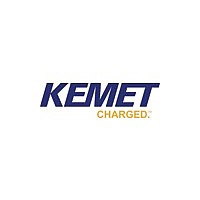M39006/22-0345H Kemet, M39006/22-0345H Datasheet - Page 6

M39006/22-0345H
Manufacturer Part Number
M39006/22-0345H
Description
Manufacturer
Kemet
Datasheet
1.M3900622-0345H.pdf
(28 pages)
Specifications of M39006/22-0345H
Tolerance (+ Or -)
10%
Voltage
50VDC
Mounting Style
Through Hole
Operating Temp Range
-55C to 125C
Esr
5.31Ohm
Construction
Axial
Df
4%
Dcl
1uA
Seal
Hermetic
Insulation
Sleeved
Polarity
Polar
Failure Rate
P
Product Length (mm)
12.5mm
Product Depth (mm)
Not Requiredmm
Product Height (mm)
Not Requiredmm
Product Diameter (mm)
5.56mm
Capacitance
10uF
Lead Free Status / RoHS Status
Supplier Unconfirmed
6
Voltage
applied ripple
13. Power Dissipation
the allowable ripple current rating as listed in the part
number reference tables.
internal temperature rise of +50°C at the +85°C ambi-
ent temperature with 40 kHz ripple life currents as
specified in MIL-PRF-39006.
established at these conditions, with the adjusted DC
bias applied during the test.
devices at conditions other than those defined for the
Ripple Life Test can be derived from the following table.
This table is listed as Table II, in MIL-PRF-39006/22F.
The following rules apply to the ripple capability of these
devices:
1. At +125°C, the rated voltage decreases to 2/3 of the
2. The positive peak of the applied AC ripple voltage plus
3. The ripple current ratings within the part number tables
4. The maximum allowable temperature rise decreases
5. The ESR decreases with increasing frequency, and the
6. The "% of +85°C Rated Voltage" defines the DC bias
14. Long-Term Stability
ditions, capacitance will typically change within
+10% -20% during a 10,000 hour life test +85°C.
+85°C show that post limits (at standard conditions) are
within 20% (max) of initial value at the conclusion of these
tests.
DF; in fact, leakage current typically exhibits a logarithmic
Frequency of
+85°C
Rated
% of
Ambient
current
The power dissipation of this device is defined by
The permissible AC currents applied to these
+85°C rated.
the DC bias cannot exceed the rated voltage of the
device, and the DC bias minus the negative peak of
the AC voltage cannot exceed the maximum allow-
able reverse voltage of the device.
represents a maximum allowable internal tempera-
ture rise of +50°C at 40 kHz, and at an ambient tem-
perature of +85°C, and complying to rules 1 and 2.
linearly, to a +10°C rise at +125°C.
internal temperature rise is proportional the ESR of
the device.
level for the device.
When stabilized for measurement at standard con-
Dissipation factor data from 10,000 hour life tests at
Leakage current is more variable than capacitance or
+66.67%
100%
90%
80%
70%
=55°
0.60
0.60
0.60
0.60
0.60
0.39
0.46
0.52
0.58
0.60
Temp (°C)
85°
120 Hz
105°
0.35
0.44
0.46
--
--
125°
0.27
--
--
--
--
© KEMET Electronics Corporation, P.O. Box 5928, Greenville, SC 29606 (864) 963-6300
=55°
0.71
0.71
0.71
0.71
0.71
These ratings reflect an
0.43
0.55
0.62
0.69
0.71
Temp (°C)
85°
800 Hz
These currents are
105°
0.42
0.52
0.55
--
--
125°
0.32
--
--
--
--
Permissible AC Currents
=55°
0.72
0.72
0.72
0.72
0.72
0.45
0.55
0.62
0.70
0.72
Temp (°C)
85°
1kHz
105°
0.42
0.52
0.55
--
--
125°
0.32
dependence in several respects. MIL-PRF-39006 permits
leakage current (measured at standard conditions) to rise
by 25% at 85°C over 10,000 hour life tests.
15. Failure Mode
rated conditions of forward DC voltage, reverse DC volt-
age, surge voltage, surge current, power dissipation, or
temperature. As with any practical device, these capaci-
tors also possess an inherent, although low, failure rate
when operated within the rated condition.
metric drifts (see Section 14 “Long Term Stability”)
are of no consequence in circuits suitable for wet tanta-
lum capacitors. Catastrophic failure occurs as an ava-
lanche in DC leakage current over a short (millisecond)
time span. The failed capacitor, while called “short-cir-
cuited”, may exhibit a DC resistance of 10 to 10
ance circuit, continued flow of current through the capac-
itor may obviously produce severe overheating. The
short-circuit failure may thereby be converted to an
open-circuit failure. If the circuit does not open promptly,
the over-heated capacitor may damage the circuit board
or nearby components. Protection against such occur-
rence is obtained by current-limiting devices or fuses
provided by the circuit design.
tantalum capacitors is low, and this failure rate may be
further improved by circuit design. Statistical failure rates
are provided for wet tantalum capacitors.
16. Reliability Prediction
application conditions; DC voltage, ambient tempera-
ture, and circuit impedance. Additional effects are
attributable to the capacitance of the device and atmos-
pheric and mechanical exposure of the assembled cir-
cuit. The 1000 multiplier at the end converts the failure
rate to parts-per-billion piece-hours. A prediction of the
failure rate can be made using these application condi-
tions and the formulas and tables listed in MIL-HDBK-
217F (Notice 2).
--
--
--
--
=55°
0.88
0.88
0.88
0.88
0.88
Capacitor failure may be induced by exceeding the
One failure mode is by short-circuit. Minor para-
If a failed capacitor is in an unprotected low-imped-
Fortunately, the inherent failure rate of KEMET wet
The failure rate is dependent upon three important
0.55
0.67
0.76
0.85
0.88
Temp (°C)
85°
10 kHz
105°
0.52
0.64
0.68
--
--
125°
0.40
--
--
--
--
=55°
1.00
1.00
1.00
1.00
1.00
0.63
0.77
0.87
0.97
1.00
Temp (°C)
85°
40 kHz
105°
0.59
0.73
0.77
--
--
125°
0.32
--
--
--
--
=55°
1.10
1.10
1.10
1.10
1.10
0.69
0.85
0.96
1.07
1.10
Temp (°C)
85°
100 kHz
4
105°
0.65
0.80
0.85
ohm.
--
--
125°
0.50
--
--
--
--













